Teaching What the World Needs: How Neuroscience, Student Leadership, and Productive Struggle Prepare Learners for What’s Next
Key Points
-
GRiT equips students with relational intelligence, resilience, and self-awareness, addressing gaps in readiness for both school culture and workforce needs.
-
Neuroscience-backed practices like productive struggle and self-leadership frameworks empower students to thrive emotionally and socially in complex environments.
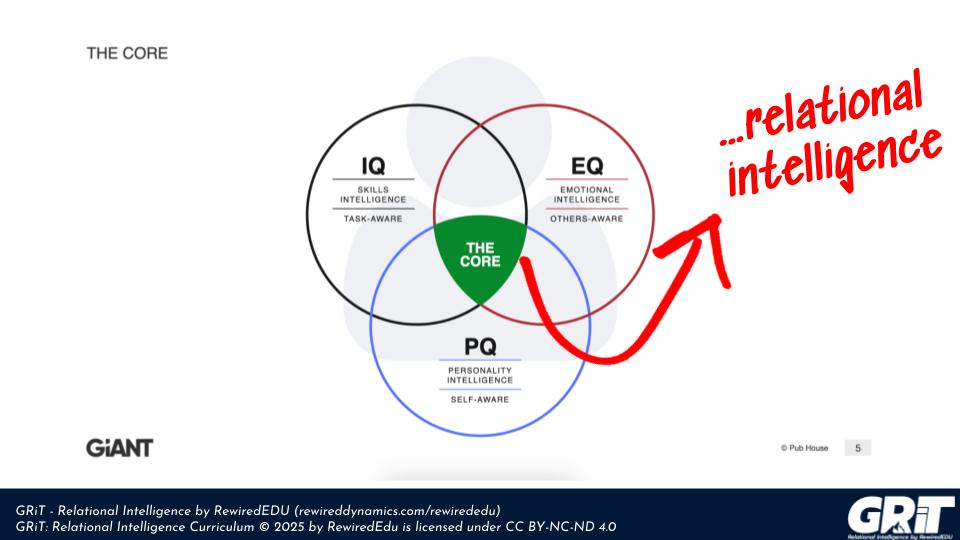
By: Kurt Wismer
“The highest-priority skills for the future aren’t technical. They’re human.”
— World Economic Forum, Future of Jobs Report 2025
What if we measured student success not by their GPA or seat time, but by their ability to lead themselves, navigate challenges, and take responsibility for the room they’re in?
That question started in a high school entrepreneurship classroom, and it has grown into a schoolwide movement to reframe how we think about readiness, resilience, and leadership.
It’s called GRiT. While it began as a way to help students become stronger communicators and team builders, it has become something much bigger: a blueprint for the non-technical, human skills our students and our world desperately need.
The Skills the World Actually Wants
According to the World Economic Forum’s Future of Jobs Report (2025), the fastest-rising job skills aren’t tied to coding languages or compliance. They include the following:
- Creative thinking
- Resilience, flexibility, and agility
- Curiosity and lifelong learning
- Self-awareness and emotional intelligence
These are the same skills our students tell us they often struggle with most. In interviews and self-reflection, they describe feeling anxious, feeling unsure of how to handle conflict, and feeling reluctant to take healthy risks. They don’t lack intelligence; they lack internal language, practice, and confidence.
This isn’t just a learning gap. It’s a relational intelligence gap (relational intelligence is the intersection between EQ, IQ, and PQ). And it is showing up in school culture, workplace readiness, and mental wellness indicators across the country.

The Neuroscience of Readiness
In today’s learning environments, we’ve become more attuned to the importance of well-being, but we sometimes misunderstand how to get there. In trying to protect students from discomfort and desired difficulties, we shield them from the very conditions that build strength.
The truth is, productive struggle is not a threat to mental wellness; it is a foundation for it. Neuroscience helps explain why.
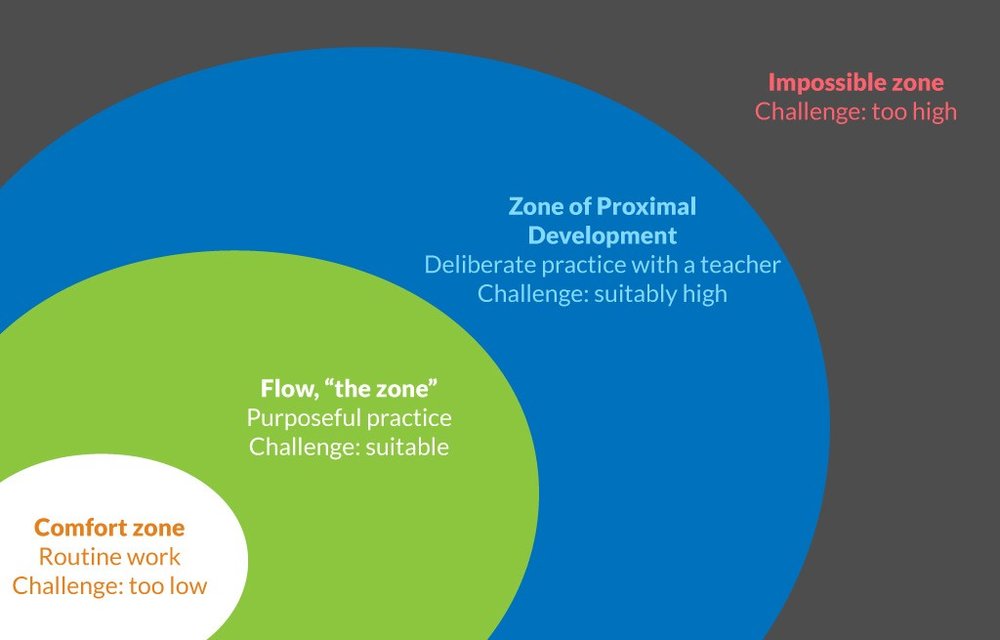
When students are challenged just beyond their comfort zone, in what Vygotsky called the Zone of Proximal Development, they activate the prefrontal cortex, responsible for executive function, problem solving, and decision-making. They also engage in:
- Effortful retrieval and memory formation
- Myelination, the process that strengthens neural pathways through repetition
- The release of dopamine, which reinforces persistence and motivation
This is neuroplasticity in action. The brain literally rewires itself through effort, and students become more capable with every intentional challenge they overcome.
As the authors of Make It Stick (Peter C. Brown, Henry L. Roediger III, and Mark A. McDaniel) wrote,
“Learning that’s easy is like writing in sand; here today and gone tomorrow.”
Where Leadership Starts: With the Self
We often tell students they need to be leaders, but we rarely teach them how to lead themselves.
GRiT started as a way to help students in an entrepreneurship class build better team communication, work through failure tolerance, and develop high-performing teams. What we found was that their success had less to do with technical skills and more to do with self-awareness, ownership, and emotional regulation.
So we asked: What if we started there?
The GRiT curriculum now gives students language and frameworks for navigating identity, challenge, and team dynamics. They explore questions like:
- “What’s it like to be on the other side of me?”
- “How do I respond to challenges or feedback?”
- “What habits are helping or hurting me, and what’s the story I’m telling myself?”
These aren’t just character-building moments, they’re brain-building ones.
The Peace Index: Measuring How We Show Up
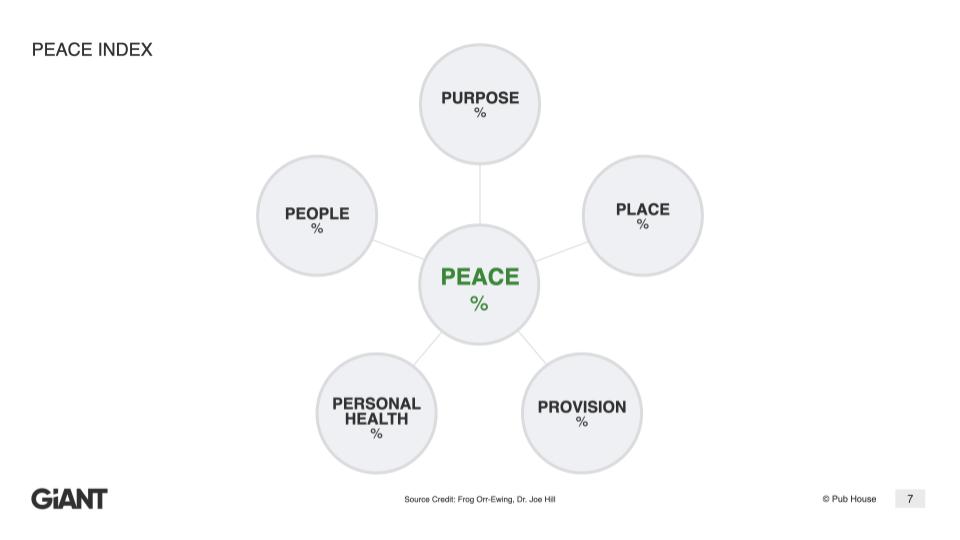
One of our most surprising tools has been the Peace Index, a simple, reflective check-in that invites students to rate how they’re doing in five key areas: purpose, people, place, personal health, and provision.
It’s not like other mental health surveys that try to diagnose the overall problems of a student body. It pinpoints the issues each student may be dealing with so that the student and his/her supporters can intervene early, work on relational repair, and set goals for self-leadership.
When students use it consistently, they begin to notice patterns. They start conversations that matter. They develop empathy. And they practice the very relational intelligence skills that employers say are most lacking in the workforce today.
The Portrait Is Taking Shape
GRiT aligns directly with the CASEL framework, supporting all five social-emotional competencies, and it is deeply aligned with the emerging Portrait of a Graduate models being adopted by schools and states across the country.
But here’s our take: it’s not enough to define a portrait. We need to build the tools and experiences that actually form it.
Through challenges, reflections, team-based projects, and language rooted in neuroscience and leadership development, students don’t just check boxes; they become more self-aware, adaptable, and accountable.
One student said it best:
“Before this, I didn’t realize how much of my behavior came from fear or self-preservation. Now I know how to catch it and change it.”
Outcomes That Stick: What the Data Says
While GRiT is rooted in neuroscience, leadership development, and CASEL-aligned competencies, it’s also backed by real-world results.
Across multiple implementations, we’ve tracked measurable improvements in the following:
- Student self-awareness and ability to reflect on their own emotional and behavioral patterns
- Resilience and persistence, especially when facing academic or social challenges
- Team communication and conflict resolution, including peer-to-peer feedback that actually works
- Student-reported sense of belonging and mental wellness
We’ve seen the following positive outcomes:
- A decrease in student discipline referrals
- An increase in student attendance and engagement
- Improved school culture metrics based on Peace Index reflections and student self-ratings
- Students articulating specific shifts in how they lead themselves and show up for others
This isn’t just about pointing to a cliched inspiration poster or dragging students through an SEL lesson they aren’t paying attention to. GRiT skills are durable, human-centered skills, practiced and internalized, that carry forward well beyond the classroom.
The Call: Don’t Just Prepare Students. Transform Them.
We’re entering a world that will demand more than knowledge. It will demand ownership, resilience, collaboration, and clarity. That kind of readiness can’t be downloaded, viewed on Tiktok, or mastered with AI; it must be developed.
GRiT offers a data-driven approach. It is not a magic solution, but it is a coherent, intentional, neuroscience-informed system for building the skills the world is asking for, starting with students learning how to know themselves so they can lead themselves.
Kurt Wismer serves as the Director of Curriculum Development and Deployment at Rewired Dynamics, where he leads the development of the GRiT curriculum—an innovative program focused on relational intelligence. He is also an educator at the School District of North Fond du Lac, teaching Entrepreneurship, Management, and Relational Intelligence, where he empowers students to develop the skills needed for leadership and real-world success.



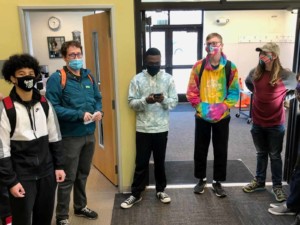
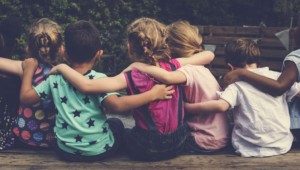
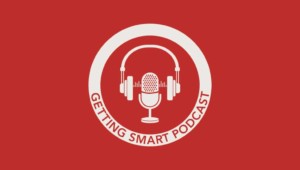
0 Comments
Leave a Comment
Your email address will not be published. All fields are required.